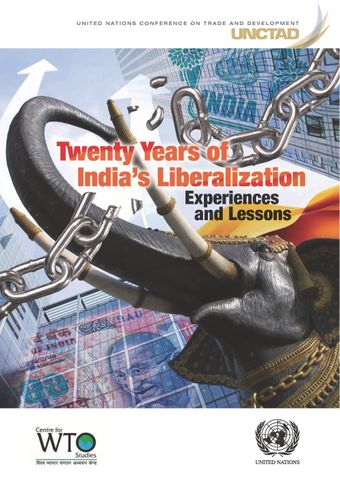Agricultural trade liberalization policies in India: Balancing producer and consumer interests

- Authors: Ramesh Chand and Sumedha Bajar
- Main Title: Twenty Years of India's Liberalisation , pp 27-42
- Publication Date: December 2012
- DOI: https://doi.org/10.18356/e83f42c3-en
- Language: English
India followed an inward-looking and highly protectionist trade policy in agriculture till early 1990s. Barring a few traditional commercial commodities, agricultural trade was subjected to measures like quantitative restrictions, canalization, licenses, quotas and high tariff rates. These measures strictly regulated imports and exports to safeguard domestic producers’ and consumers’ interests. In most commodities levels of export and import were determined by fluctuations in domestic supply and exports were residuals. Similarly, imports were allowed with fall in domestic production to fill the gap between domestic demand and supply. The production pattern was strictly guided by domestic requirement and self sufficiency in almost all major commodities. Allocation of resources based on comparative advantage in trade did not get much emphasis. This scenario started changing with economic reforms of 1991. External trade was further liberalised with the implementation of WTO Agreement on Agriculture in 1995. The process was accelerated after India lost the dispute in WTO to retain Quantitative Restrictions (QRs) on ground of Balance of Payment
© United Nations
ISBN (PDF):
9789210555036
Book DOI:
https://doi.org/10.18356/721b3d9b-en
Related Subject(s):
Economic and Social Development
Sustainable Development Goals:
Countries:
India
-
From This Site
/content/books/9789210555036c006dcterms_title,dcterms_subject,pub_keyword-contentType:Journal -contentType:Contributor -contentType:Concept -contentType:Institution105
/content/books/9789210555036c006
dcterms_title,dcterms_subject,pub_keyword
-contentType:Journal -contentType:Contributor -contentType:Concept -contentType:Institution
10
5


